I’ve reviewed many different airbag packs here on Wildsnow, but have spent little time covering the ‘lifebag’ style by Snowpulse. So here we go.
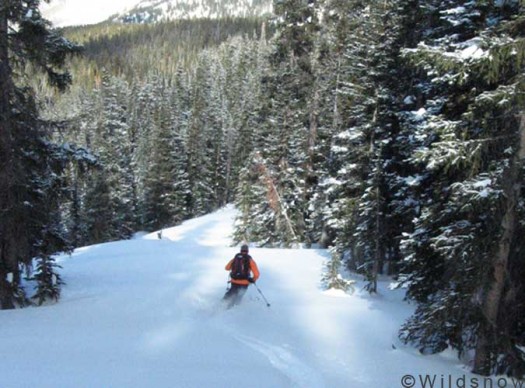
With the higher than normal avy danger these days in many North American regions, it's not a bad idea to stack the deck in your favor with an airbag pack. But, safe route finding provides more protection than anything else.
The Snowpulse lifebag design has been around since Snowpulse’s beginning. Essentially a horseshoe shape that wraps around your head, neck, and chest, the idea is to provide more trauma protection than other airbag styles. There’s no hard data that I’m aware of to prove that this style is any safer, but anecdotes suggest that it may be. My wife had an early generation of the Snowpulse Lifebag 30, which she happily used for several years. Now she’s very content with a Snowpulse RAS Pro 35, but sometimes I feel like I want her to have all the protection possible so the lifebag is definitely something we’ve been considering. Snowpulse’s latest version of the lifebag concept is called the Guide 30, and I’ve had a chance to take it out a few times this past month.
I’ve been remiss in not getting this review posted sooner. I’d hoped to be able to spend some time with the Guide 30 to give it a thorough run down. But with the “season” we’ve had here in Colorado… So, what follows is more of a quick look. Guide 30 is quite similar to the Snowpulse Pro35, (which I love) so I’ll compare it to that a fair bit.
The Guide 30 is 30 liters in volume, but actually feels about the same size as the Pro 35. It has the same disappearing cable loops for diagonal ski and ice axe carry, plus the disappearing straps for vertical snowboard carry. A big improvement is that the shovel pocket opens big enough to actually get into it. Also, you get a little zip pocket in front of the tool pocket and small goggle pocket between the shovel and main compartment. Diagonal ski carry works fine with the horseshoe airbag style.
There are straps for A-frame ski carry (work well as compression straps to slim down the pack), but not recommended if you might have to pull the trigger. There’s a pouch for a hydration bladder, and the hose is ported out the side of the pack. You can then run the hose through the elastic straps on the right hand shoulder strap (which are actually provided as a means of helping you pack the airbag). There’s no insulated place for the hose. You also get a small hip belt zippered pocket and a gear loop. The leg loop tucks behind the zippered pocket.
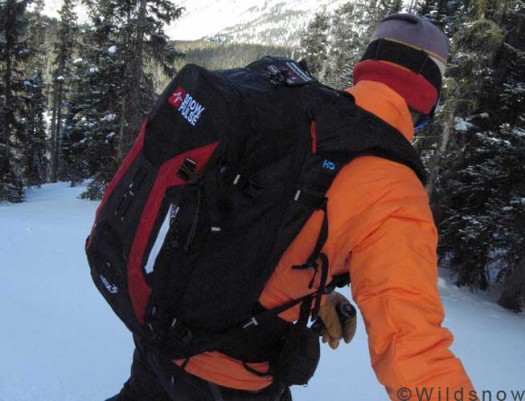
Snowpulse Guide 30. White zipper is a small pocket for odds and ends -- perfect spot for hats and gloves. Next zipper is a big panel opening for the avy tool pocket, then a completely opening panel zip for the main compartment.
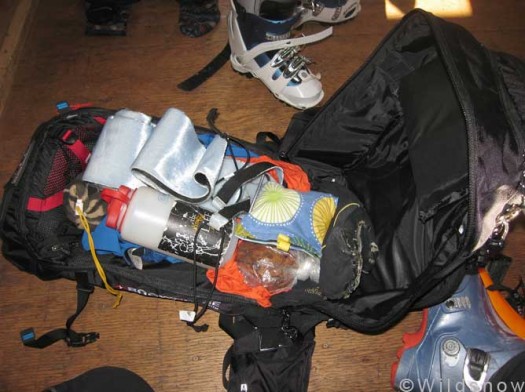
The main compartment opens completely so you can spill it all out. You can fit quite a lot in there. I did a hut trip with this pack (had to strap some things on the back) and was happy with it.
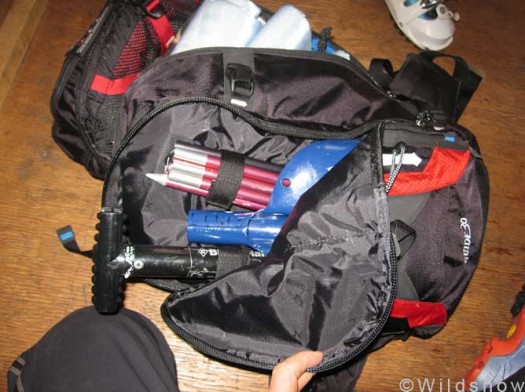
A shovel pocket that you can actually open up and get at your tools, what a concept! Only fits small to medium handles and blades. Has two velcro loops to hold your probe and handle.
The horseshoe airbag system hasn’t really changed since the early versions. It consists of a zipper that runs all the way up one shoulder strap, across the back (where the breakaway zipper is) and down the other shoulder strap. A little bit tricky to pack, but once you do it a few times, it’s no big deal. You cannot transfer this airbag between packs like the RAS. The bag inflates in about 3 seconds and makes a nice snug fit around your head, neck, and chest. This seems like it ought to provide some degree of buffer from trees, rocks, and avy debris, but of course it’s only as strong as the airbag material is. One major difference between the lifebag style airbags and all others (including other Snowpulse and Mammut packs) is that once inflated, the airbag begins to slowly leak air. The idea behind this is that if you are buried, as the airbag deflates, it will provide an air pocket. The air leaking out of the airbag into this pocket is breathable as it is mostly just ambient air pulled in by the venturi valves, combined with air from the cylinder.
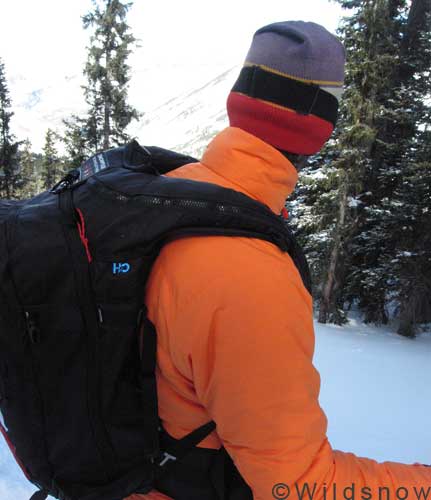
One of the first things you'll notice about this pack is that the shoulder straps are bulky. This is because the airbag is inside them. At first this is a pain, but once you've adjusted the straps and take the pack out a few times, you won't notice the straps.
Other manufacturers have claimed that this style of airbag hinders your field of vision, making it hard to escape an avalanche or see where you are going. I think this is a non-issue; see my post for more about how the Snowpulse lifebag doesn’t affect field of vision.
Guide 30 uses the Snowpulse 2.0 system, which utilizes a cable trigger handle and user refillable air cylinder. Refill instructions here. This system helps the Guide 30 drop some weight from it’s former incarnation. The size large is 7.78 lbs with a filled air cylinder (also comes in size medium). See the airbag overview page for more weights and prices.
Verdict:
Guide 30 is most certainly heavier than the Pro 35, but if you ski in the trees a lot and the extra level of potential trauma protection seems worthwhile to you, it is probably worth the extra weight and bulk. If not, I’d save the weight and take the Pro 35, which apart from the shovel pocket, is a better designed pack.
Nick Thompson brings an incredible amount of skiing and mountaineering experience to WildSnow.com. Nick grew up climbing and skiing in the mecca of Telluride. He has a super attitude and incredible drive, making Nick one of those people who is terrific to be in the mountains with.
